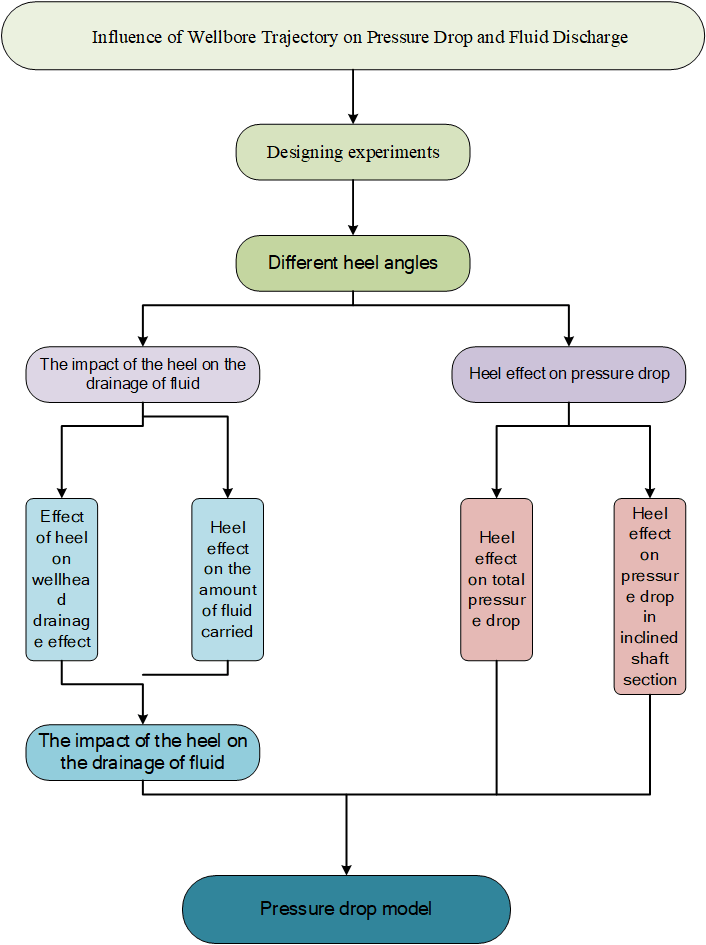 Open Access
Open Access
ARTICLE
Influence of Wellbore Trajectory on Pressure Drop and Fluid Discharge
1 Shanghai Branch of CNOOC (China) Co., Ltd., Shanghai, 200335
2 CNPC Key Laboratory of Oil and Gas Productions on Yangtze University, Jingzhou, 434023, China
3 Petrochina Multiphase Flow Laboratory of Gas Lift Innovation Center, Wuhan, 430100, China
4 Petroleum Engineering College of Yangtze University, Wuhan, 430100, China
* Corresponding Author: Guowei Wang. Email:
Fluid Dynamics & Materials Processing 2023, 19(8), 2053-2066. https://doi.org/10.32604/fdmp.2023.026301
Received 29 August 2022; Accepted 24 November 2022; Issue published 04 April 2023
Abstract
An experimental analysis has been conducted to study the process of fluid accumulation for different borehole trajectories. More specifically, five heel angles have been experimentally realized to simulate the borehole trajectory of the sloping section of the formation. The fluid-carrying capacity, pressure drop and fluid discharge volatility have been investigated for these conditions and, accordingly, the relationship between heel angle and wellbore pressure drop fluid-carrying capacity has been determined. The results show that while the reasonable roll angle can increase the pressure loss in the wellbore, it is beneficial to drainage. In terms of pressure loss and liquid-carrying capacity, when the heeling angle is 50°, the latter is increased while the former becomes very high, which indicates that when drilling and completing wells on site, a 50° roll angle should be avoided. It is found that the main reason for the increase of the total pressure drop in the wellbore is the increase of the local pressure loss in the inclined section. From the perspective of drainage stability, when there is heeling in the inclined section of the horizontal well, the fluctuation of the wellbore drainage tends to be enhanced. Through the comparison of the Beggs-Brill (B-B) and Mukherjee-Brill liquid holdup methods, it is found that B-B method better predicts liquid holdup. A new method for calculating the pressure drop in the inclined section in the presence of lateral inclination is obtained by taking into account the pressure drop in the curved section. Through comparison with experimental data, it is found that the error is within 20%, and the prediction accuracy is high.Graphic Abstract

Keywords
Cite This Article
 Copyright © 2023 The Author(s). Published by Tech Science Press.
Copyright © 2023 The Author(s). Published by Tech Science Press.This work is licensed under a Creative Commons Attribution 4.0 International License , which permits unrestricted use, distribution, and reproduction in any medium, provided the original work is properly cited.


 Submit a Paper
Submit a Paper Propose a Special lssue
Propose a Special lssue View Full Text
View Full Text Download PDF
Download PDF Downloads
Downloads
 Citation Tools
Citation Tools